| Program at a Glance | ||||||||
| 09:00-10:30 | 10:30-11:00 | 11:00-12:30 | 12:30-14:00 | 14:00-15:30 | 15:30-16:00 | 16:00-17:30 | 17:30-19:00 | 19:00-21:00 |
| Welcome and Session I | AM Coffee Break | Session II | Luncheon | Session III | PM Coffee Break | Session IV | Break | Welcome Reception |
| Room: Verdun | |||
| Time | Speaker | Affiliation | Talk Title |
| 08:30-09:00 | Registration | ||
| 09:00-10:30 | Session I: 5G Initiative and Distinguished Keynote | ||
| 09:00-09:10 | Welcome | Welcome Address | |
| 09:10-09:30 | 5G Initiative Talk | ||
| 09:30-10:30 | Yasser Nafei | Senior Vice President , LG Electronics, USA | KS-01 Accelerating the Adoption of 5G by Balancing the Technical Jargon with Customer-Centric Vocabulary |
| 10:30-11:00 | AM Coffee Break | ||
| 11:00-12:30 | Session II: Theme – 5G Challenges | ||
| 11:00-11:15 | Muquid Ali | VP of Operations, AWTG Limited, UK | KS-02 Challenges of Deploying 5G |
| 11:15-11:30 | Bosco Eduardo Fernandes | Senior Strategic Advisor, COMCON, Germany | KS-03 5G the “One Size Fits it All” Technology for the Near Future? |
| 11:30-11:45 | Li Li | Senior Research Scientist, Communications Research Centre, Canada | KS-04 Challenges and Innovations in Sustainable Spectrum Management for 5G |
| 11:45-12:00 | Stefano Buzzi | Associate Professor, University of Cassino and Lazio Meridionale, Italy | KS-05 Putting the Citizens at the Centre of the Network: Cell-Free architectures |
| 12:00-12:30 | Panel for Session II | ||
| 12:30-14:00 | Lunch Break | ||
| 14:00-15:30 | Session III: Theme – 5G Architecture | ||
| 14:00-14:15 | Toktam Mahmoodi | Associate Professor, King’s College London, UK | KS-06 Shaving the Milliseconds of Communication and Networking Protocols |
| 14:15-14:30 | Michael Starsinic | Principle Engineer , InterDigital, USA | KS-07 Leveraging the Service Capability Exposure Function (SCEF) in NB-IoT Device Deployments |
| 14:30-14:45 | Faqir Zarrar Yousaf | Senior Researcher , NEC Labs, Germany | KS-08 NFV/SDN: Technology Enablers for 5G – The Twain Shall Meet! |
| 14:45-15:00 | Yang Yang | Professor, SIMIT, and Director, WiCO, Chinese Academy of Sciences, China | KS-09 Open 5G Platform |
| 15:00-15:30 | Panel for Session III | ||
| 15:30-16:00 | PM Coffee Break | ||
| 16:00–17:30 | Session IV: Theme – 5G Applications | ||
| 16:00-16:15 | Stan Wong | Professor, 5G Testbed Manager, Digital Catapult, UK | KS-10 5G Security in Risks and Vulnerabilities |
| 16:15-16:30 | Belkacem Mouhouche | Principal Standards Engineer, Samsung Research, UK | KS-11 The Challenge of Broadcast Support in 5G Systems |
| 16:30-16:45 | Doru Calin | Director & Fellow, Nokia Bell Labs, USA | KS-12 The Future X Network, A Bell Labs Perspective |
| 16:45-17:00 | Klaus David | Full University Professor, Kassel University, Germany | KS-13 Is There any Room or Need for Beyond 5G: 6G Requirements |
| 17:00-17:30 | Panel for Session IV | ||
SCHEDULED TALKS

ABSTRACT
There’s a lot of expectation around 5G and the promise of what it can deliver. To cater for the diverse requirements and high expectations, 5G will require a paradigm shift in our understanding of service conception, capability and delivery. Vendors, operators and standardisation bodies across the world are all working towards developing the necessary technologies and standards that will be needed to deliver the next generation of networks beyond LTE. AWTG has been working with one of the pre-eminent 5G research organisations in the world at the University of Surrey in the UK to understand what the challenges will be to deploying the next generation of 5G networks. Additionally, we are working with government institutions, local enterprise partnerships and industry partners in an advisory capacity looking to deliver 5G trials and testbeds. Based on our experiences, we hope to share some of our key findings and thoughts on what we perceive to be the gap is between the existing LTE deployments and what would be needed to deliver the key 5G uses cases such as Connected Autonomous Vehicles, Massive Machine to Machine Connectivity and Enhanced Mobile Broadband. Critically we have developed a business model to understand the financial commitment, investment hurdles and bottlenecks that operators would face as they look to upgrade their existing capability and migrate towards a 5G architecture.
DATE, TIME, AND MEETING ROOM
Monday, October 9, 11:00-11:15, Verdun
ABOUT THE SPEAKER
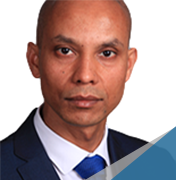
Muquid Ali is currently the VP of Operation at AWTG Limited. He is a telecommunications expert with 22 years industry experience in the design, roll-out and quality of service improvement of wired and wireless networks across all major technology standards including 2G, 3G and LTE. Muquid has a proven track record in technical project management with a broad range of experience in the end to end mobile network life-cycle. This includes new network roll-out, upgrades and technology refresh across a wide spectrum of projects and roles spanning Europe, Asia, Middle East and Africa. Working with the 5GIC at the University of Surrey, Muquid has recently delivered the ‘first of its kind in the world’ comprehensive end to end 5G test-bed including a 44 site RAN, full equalised latency fibre backhaul and core network. The 5G innovation centre is using the network to help develop new technologies and standards that will be needed to deliver the next generations of networks beyond LTE. Muquid has worked on the planning, delivery and service improvement of all the UK’s main mobile operator networks and has a significant amount of experience in the trailing, testing and validation of new technologies and standards. His experience includes working on the delivery and acceptance of the first 3G trail networks in the UK as well as the delivery and acceptance of a number of LTE networks. Muquid was also responsible for the compliance testing and performance validation of the vendor equipment against the 3GPP LTE standards and specification. During the recent UK National Audit Office review into the Home Office’s Emergency Services Network replacement programme, Muquid was engaged as a subject matter expert to provide technical guidance, review and appraisal of the programme objectives, deliverables, project plan and contractual arrangements. Muquid delivered a wide ranging assessment of the key technical challenges, risks and mitigation strategies and the report has since been submitted to parliament. Muquid’s experience covers all the major industry suppliers and operators and he has served as a subject matter expert to a wide range of international clients such as the Department for Economy (DfE) in Northern Ireland, the GSMA, major equipment vendors and retail clients such as Tesco.

ABSTRACT
5G systems will bring an unprecedented advance and revolution in the way we use cellular networks. Wireless networks will be finally capable of providing residential broadband access with speeds similar to those of ADSL technology, will enable the advent of the tactile Internet, and will serve mobile users with extremely large data-rates. For the first time, citizens will be placed at the center of the network, and mobile-edge-computing will expand the capabilities of their devices. This talk provides an overview of user-centric cell-free architectures, from the CoMP technology up to recent advances in the field of cell-free massive MIMO systems.
DATE, TIME, AND MEETING ROOM
Monday, October 9, 11:45-12:00, Verdun
ABOUT THE SPEAKER

Stefano Buzzi is currently an Associate Professor at the University of Cassino and Lazio Meridionale, Italy. He received the Ph.D. degree in Electrical and Computer Engineering from the University of Naples “Federico II” in 1999, and has had short-term research appointments at Princeton University, Princeton (NJ), USA in 1999, 2000, 2001 and 2006. He is a former Associate Editor of the IEEE Signal Processing Letters and of the IEEE Communications Letters, while is currently serving as an Editor for the IEEE Transactions on Wireless Communications. He is also a Member of the IEEE 5G Tech Focus Editorial Board. Dr. Buzzi’s research interests are in the broad field of communications and signal processing, with emphasis on wireless communications and 5G systems. He has co-authored about 150 technical peer-reviewed journal and conference papers, and among these, the highly-cited survey paper “What will 5G be?” (IEEE JSAC, June 2014) on 5G wireless networks.

ABSTRACT
The talk will provide perspectives on the challenges and opportunities of a new era in networking, which will be defined by the digitalization and connection of everyone and everything with the goal of automating much of life, effectively creating time, by maximizing the efficiency of everything we do. These perspectives are articulated in Nokia Bell Labs’s Future X network vision, as we anticipate that the formation of new networks is a driving force for a new technological revolution that has the potential to define a new phase of human existence.
DATE, TIME, AND MEETING ROOM
Monday, October 9, 16:30-16:45, Verdun
ABOUT THE SPEAKER

Doru Calin is a Director and Bell Labs Fellow at Nokia Bell Labs, where he has recently joined the Future Public and Private Networks organization. Prior to this role, he was an Innovation Domain Leader with Nokia Mobile Networks CTO in Murray Hill, NJ, USA, with broad responsibilities for accelerating innovations in 5G, mobile network virtualization, mobile edge cloud computing, cloud based technologies, IoT and verticals. Dr. Calin serves also as an Adjunct Professor with Columbia University, New York City, as an Associate Editor of IEEE Communications Letters and as an Editorial Board Member of the Springer’s Wireless Personal Communications International Journal. He started his Bell Labs career in early 2001, and held a variety of positions in research, applied research, and management of research. Before joining Bell Labs, he was a Technical Consultant with Bouygues Telecom, and a Senior Research Engineer with Motorola Research Labs, Paris. He holds 30 independent patents awarded in multiple countries, over 20 patents pending and has co-authored over 75 research publications. He is the recipient of an IEEE WCNC 2015 best paper award, IEEE Globecom 2013 HetNets Workshop best paper, two Bell Labs President’s Gold Awards, four Bell Labs Teamwork awards and a Motorola 3GPP standards award. He received Ph.D. (High Hons.) and MSc degrees in electrical and computer engineering from the University of Versailles and TELECOM SudParis, France and MSc in electrical engineering from Polytechnic University of Bucharest, Romania, and has been a Senior Member of IEEE since 2005.

ABSTRACT
To address the question in the title, i.e. “Is there any room or need for Beyond 5G: 6G first vision and requirements” this paper has two contributions: First, we discuss all the different standards, starting from the first analog wireless cellular standards, via 2nd generation GSM, passing 3G up to 5G. Based on the key achievements of each generation, its factors of success but also its potential deficiencies, then secondly, a first vision for 6G and its requirements is presented.
DATE, TIME, AND MEETING ROOM
Monday, October 9, 16:45-17:00, Verdun
ABOUT THE SPEAKER
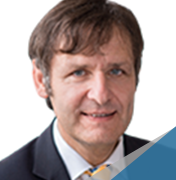
Klaus David is full University Professor since 1998 and since 2000 head of the chair of communication technology (ComTec) at Kassel University, Germany. His research interests include mobile networks, applications and context awareness. He has 12 years of industrial experience in major companies like HP, Bell Northern Research, IMEC, T-Mobile (as Head of Group and UMTS project leader) and IHP (as Head of Department), with five years of international experience in the UK, Belgium, USA, and Japan. He has published over 200 scientific articles, including 3 books, and has registered over 10 patents. He is active in IEEE (Editor in Chief IEEE VT Magazine, BoG IEEE VT), NGMN (next generation mobile networks – the worldwide operator organization) as advisor, WWRF (Wireless World Research Forum) as publication manager and he is involved in many conferences, such as IST Future Network & Mobile Summit 2012 Berlin as TPC chair or in 2013, 14, 15,16, and 18 in IEEE PerCom as TPC member. Also, he is a regular technology and strategy consultant to industry. Klaus David is also co-founder of two start-up companies.

ABSTRACT
The sky-high expectations of 5G to be the one size Technology fits all services across industry verticals, public and private networks is complicated and certainly will not achieve this with a wide range of features and capabilities. There are many opportunities, but also challenges and questions surrounding 5G development/deployment, e.g., from infrastructure and spectrum to devices and use cases. Also, crucial is to be able to identify the relevant issues across industry verticals as well as Challenges and barriers to upgrading to 5G. While 5G is still evolving it is anticipated to have a preliminary 5G standard specifications in 2018, standards implementation and deployment is expected to reach into 2022 and beyond. Hence, 5G will have to co-exist with 4G for sometime. The hype around 5G is already building — similar to what was seen for 3G and 4G. This talk will point out some of these issues from an Industry perspective and the possible solutions).
DATE, TIME, AND MEETING ROOM
Monday, October 9, 11:15-11:30, Verdun
ABOUT THE SPEAKER

Bosco Eduardo Fernandes is a highly skilled senior executive with 25+ years of proven Industry experience in innovative Communication Network concepts and technology. He held various managerial positions in the past at major Corporates and is now CEO and Senior Strategic Advisor of an Independent consulting company, focused on SDN/NFV, 5G, IoT, Big Data, and Cybersecurity, LPWAN, IoT, and Future Innovation of technologies for Public and enterprise networks including Utilities and Smart Cities. His contribution to Research, Standards bodies, many publications and Industry Fora work programs has been well received. Bosco holds a Master’s (Dipl. Ing.) degree in Electrical Engineering from the Munich University and an Executive MBA. He is a Senior Member of IEEE, member of Internet Society and Russian Telecommunications Academy of Russia (ITA).

ABSTRACT
The 5G and its promised smart society, consisting of billions of connected devices, will be fuelled by the radio spectrum, which is a limited and highly shared resource. How can we innovate future spectrum management to support the 5G spectrum requirements and demands? How can we manage the spectrum to facilitate the deployment and operation of new services and devices from anywhere, anytime and for all different users? This talk will discuss new technology directions and opportunities for spectrum management, including cloud-based spectrum monitoring and characterization, machine-learning-enabled spectrum management decision making, and preparations for service deployment in higher frequency bands. The latest work from the Communications Research Centre (CRC), the approaches, the testbed system prototypes, and experimental results will be described. CRC is the federal research lab under the Spectrum and Telecommunications Sector (STS) of the Government of Canada.
DATE, TIME, AND MEETING ROOM
Monday, October 9, 11:30-11:45, Verdun
ABOUT THE SPEAKER

Li Li is a Senior Research Scientist with the Communications Research Centre, a government of Canada’s research lab. Dr. Li is currently the Program Coordinator for the research program on two grand challenges in CRC, the “Spectrum Environment Awareness” Grand Challenge and the “Make Better Use of Spectrum” Grand Challenge. Dr Li’s research areas include spectrum sensing big data systems, spectrum data analytics for spectrum management, and wireless network protocols and algorithms. Dr. Li has contributed to ITU-T, IETF and represented Canada in NATO’s standard group on Line-of-Sight radio waveforms. She co-authored IETF RFC and NATO STANAG, and published in international conferences and journals. Li has served as Associate Editor for IEEE Transactions and as Track-Chair and TPC Member for various IEEE conferences. Before CRC, Dr. Li worked at Nortel Networks Ltd. as a System Architect and then as a Product Manager, and also at the SS8 Networks Ltd. as the Chief Product Architect.

ABSTRACT
Among the major transitions in 5G, is the enablement of mega scale utilities such as extremely higher data rate, significantly lower latency, and close-to-perfect coverage and reliability. The most challenging of these utilities is achieving ultra-low latency together with extreme reliability. While there are various developments on the wireless air interface, getting to milliseconds latencies throughout global connectivity is only possible if end-to-end communication protocols are leaned and extra delays are carved out. This talk overview number of techniques for leaning the communication and networking protocols and shaving the extra milliseconds, with examples of ultra-low latency use cases that are enabled through these techniques.
DATE, TIME, AND MEETING ROOM
Monday, October 9, 14:00-14:15, Verdun
ABOUT THE SPEAKER
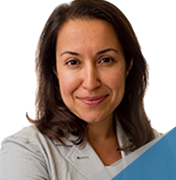
Toktam Mahmoodi is with the academic faculty of the centre for telecommunications research in King’s College London. She is a member of the Tactile Internet Lab and principal and co-investigator on projects in 5G and SDN. Previously, Toktam was visiting research scientist at F5 Networks, post-doctoral research associate in Imperial College London, Mobile VCE researcher, and telecom R&D engineer. Her research focuses on the areas of mobile and cloud networking, and includes ultra-low latency networking, network virtualisation, mobility management, network modelling and optimisation. She also works on applications of mobile communications in the healthcare, smart cities, industrial networks and intelligent transportation.

ABSTRACT
Audio-visual media services generate very large volumes of data traffic on networks, which is unevenly distributed over time and geographical areas. At the same time, Quality of Experience (QoE) is strongly dependent on sustained minimum data rates and low latencies to all regardless of the total number of concurrent users. This is particularly challenging for very popular live content (e.g. sports) or unpredictable events (e.g. breaking news) that tend to cause large traffic spikes. The increasing bit-rate demands of 4k UHDTV and, in the future 8k UHDTV, and the emerging new interactive services (e.g. augmented reality, virtual reality and 360º visual media) will further increase the demand on network capacity and performance. None of the existing networks, whether fixed, mobile or broadcast, has the capability to support this type of future demand on their own due to limitations associated with capacity, delay and cost of deployment. Furthermore, the fractured landscape of protocols and APIs across them severely limits their ability to cooperate in addressing this demand. Point to Multipoint technologies will be addressed once the standardization of broadband and mission critical is finalized. In Order to prepare the point to multipoint standardization, a 5G-PPP project was launched recently, the 5G-Xcast, that will develop a solution that targets the aforementioned limitations and therefore addresses future demand, based on the key capabilities of 5G that by far exceed those of the legacy systems.
DATE, TIME, AND MEETING ROOM
Monday, October 9, 16:15-16:30, Verdun
ABOUT THE SPEAKER
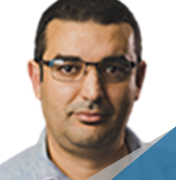
Belkacem Mouhouche is a Principal Standards Engineer at Samsung Research UK. He holds a Ph.D. degree in Signal Processing from Ecole Nationale Superieure des Telecoms (Telecom Paristech) in France. During his Ph.D. he worked on 3GPP third generation systems (UMTS). He later worked as a 3GPP standard Engineer following the development of HSDPA and LTE systems. He was also involved in FP7 European Project End to End Efficiency (E3) where he worked on cognitive radio in heterogeneous systems. His research interest are in the area of advanced techniques for the physical layer of future communication systems including MIMO, beamforming and coding applied to broadcast and broadband systems like the LTE-A and DVB, ATSC3.0. Dr. Mouhouche was also heavily involved in the development of the latest broadcast terrestrial standard ATSC3.0 and led the broadcast activity within the 5G-PPP project Fantastic-5G. Recently, he was appointed as innovation, dissemination and standardization manager of the 5G-PPP project 5G-Xcast focused on new point to multipoint techniques for 5G networks.

ABSTRACT
Fifth-generation wireless technology promises to open-up a new horizon of applications and use cases well beyond the conventional mobile and personal communications. For consumers, mobile communication is associated with bandwidth, transmission speed and increased data consumption and applications’ usage. Yet for 5G, the value proposition aims to target new industries, secure diverse users and enable the digitalization of our humanity, society and economy. The promise of 5G is to connect the building blocks of our existence including healthcare, energy, transportation, education, manufacturing and even entertainment. The true issue facing 5G is not the technical challenge but rather the wide gap between its lingo and the consumers it wishes to serve. Technologists are increasingly speaking of Massive multiple-input, multiple-output (M-MIMO), beamforming, millimeter-waves, device-to-device (D2D) communications, Machine-to-Machine (M2M), small cell deployment, latency, IoT, software defined networks, network function virtualization, cloud RAN and mobile edge computing. Consumers on the other hand are concerned with the health risks of antennas, the architecture eye-sore of those antennas on top of light poles and buildings, the security nightmare of these billions of connected devices, the data protection of their medical records and more important the dwindling of their privacy in the new age of Robocalls. This presentation will focus on further highlighting this gap challenge and explore techniques, tools and research opportunities to address them to secure the smooth deployment and adoption of 5G.
DATE, TIME, AND MEETING ROOM
Monday, October 9, 09:30-10:30, Verdun
ABOUT THE SPEAKER

Yasser Nafei currently serves as Senior Vice President and division head at LG Electronics. Dr. Nafei joined LG in 2010 and currently oversees sales, marketing and product management. In his current role, he is responsible for developing, communicating and executing LG strategy, business plans, product and technology roadmaps and go to market activities. Throughout his career, Dr. Nafei previously held senior management positions at Alcatel, IBM, Motorola, Nortel and Tellabs. His global assignments include research and development, technology strategy and mergers and acquisitions. Dr. Nafei holds a Bachelor’s and a Masters’ degrees in Electrical Engineering from Ain Shams University in Egypt, a Master of Science in Telecommunications from INRS Canada, and a Ph.D. in Organization Development from Benedictine University in the United States. He is the author of several business books including Corporate Dictatorship and Corporate Spring and a published writer and lecturer in corporate governance, business turnaround strategies, conflict management, customer advocacy and mergers & acquisitions.

ABSTRACT
The SCEF (Service Capability Exposure Function) is a core network node that exposes network services to IoT Servers via a set of APIs. The SCEF APIs provide IoT Servers with access to a set of services that can be used to simplify IoT Device applications, extended battery life, and avoid network congestion. IoT Servers will need to properly leverage these API’s if we are going to achieve battery lifetimes of up to 10 years in 5G. In his presentation, Michael will give an overview of exposed services, what they are and how they can be used to create successful IoT deployments.
DATE, TIME, AND MEETING ROOM
Monday, October 9, 14:15-14:30, Verdun
ABOUT THE SPEAKER

Michael Starsinic in a Principal Engineer in InterDigital’s IoT Solutions Business Unit. For the past 7 years, his research interests have been centered on IoT related communication technologies. Since 2015, he has represented Convida Wireless in 3GPP’s System Architecture Working Group 2 (SA2). While participating in 3GPP SA2, he has been active contributor on IoT related topics such as Service Capability Exposure, Non-IP Data Delivery, Power Saving Mode, Cellular IoT, etc. Prior to his participation in 3GPP, he represented InterDigital in the Small Cell Forum’s Network Architecture Group where he focused on Integrated Small Cell Wi-Fi Networks (ISWNs). Michael has been working on cellular communications technologies such as 3G FDD/TDD, LTE, and 5G since 2001. His experience spans multiple areas of the network and protocol stack including the physical layer, application layer, and mobile core network.

ABSTRACT
Virtualization, containerization and softwarization technologies enable telecommunication systems to realize multi-tenancy, multi-network slicing and multi-level services. However, the use of these technologies to such ends requires a redesign of the telecommunications network architecture that goes beyond the current long term evolution-advanced (LTE-A). This talk gives the view of fifth-generation (5G) telecommunications systems and architecture risk and vulnerability, and how to conceive to handle multi-tenancy, multi-network slicing and multi-level services securely. On one hand, 5G telecommunication systems require to deliver the network flexibility, elasticity and traffic fluctuation in the network design. On the other hand, 5G convey two independent standard systems into one unify system using cryptograph and tokenisation technique to secure the subscribers, tenants, physical network elements and virtual network entities. A currently overview of 5G security is given in this talk.
DATE, TIME, AND MEETING ROOM
Monday, October 9, 16:00-16:15, Verdun
ABOUT THE SPEAKER

Stan Wong is a 5G Testbed Manager from Digital Catapult. He was IT consultant in South East Asia and responsible to all the operations support system, big data products and metro ethernet deployment. He is one of the winner of European Commission Collaborative Spectrum Sharing Prize. He is the leader of Horizon 2020 research and innovation programme 5G novel radio multiservice adaptive network architecture (5G NORMA) security. He also was the leading editor of the chapter on “5G Infrastructure Public Private Partnership (5G-PPP) security work group trust model”. He has been invited to give a number of the information and communications technology (ICT) security talks including a talk to the Things Connected Project funded by Future Cities Catapult in the UK. This project aims to encourage the UK Internet of Things (IoT) small and medium-sized enterprises (SMEs) to develop secure IoT applications. He gave a talk on 5G security to International Telecommunications Union (ITU) in September 2017.

ABSTRACT
Facebook has recently announced its OpenCellular platform for promoting open-source wireless access technology developments and broader applications. In this talk, we will give an introduction of an open 5G platform, which applies SDN and NFV techniques to realize the key functions of a telecom operator according to the 3GPP standard on general CPU/GPU computing platform. It is very adaptive and flexible for supporting a variety of internet of things (IoT) applications in vertical industries. New technical challenges and potential applications of this open platform in delay-sensitive control areas will be fully discussed.
DATE, TIME, AND MEETING ROOM
Monday, October 9, 14:45-15:00, Verdun
ABOUT THE SPEAKER

Yang Yang is currently a professor with Shanghai Institute of Microsystem and Information Technology (SIMIT), Chinese Academy of Sciences, serving as the Director of CAS Key Laboratory of Wireless Sensor Network and Communication, and the Director of Shanghai Research Center for Wireless Communications (WiCO). He is also a Distinguished Adjunct Professor with the School of Information Science and Technology, ShanghaiTech University. Prior to that, he has held faculty positions at The Chinese University of Hong Kong, Brunel University, and University College London (UCL), Yang is a member of the Chief Technical Committee of the National Science and Technology Major Project “New Generation Mobile Wireless Broadband Communication Networks” (2008-2020), which is funded by the Ministry of Industry and Information Technology (MIIT) of China. In addition, he is on the Chief Technical Committee for the National 863 Hi-Tech R&D Program “5G System R&D Major Projects”, which is funded by the Ministry of Science and Technology (MOST) of China. Since January 2017, he has been serving the OpenFog Consortium as the Director for Greater China Region. Yang’s current research interests include wireless sensor networks, Internet of Things, Fog computing, Open 5G, and advanced wireless testbeds. He has published more than 150 papers and filed over 80 technical patents in wireless communications.

ABSTRACT
Communication networks’ architecture and technologies are undergoing through their next evolutionary phase towards 5G. This evolutional phase is markedly different from the previous phases in that the complete concept of networking is undergoing a paradigm shift. Networks are now moving beyond as mere bit-pipe providers towards a highly agile and programmable entity that can be tailored to the varying demands of the vertical industry while ensuring conformance to stringent performance requirements and expectations. New technologies and architectures are being developed that will provide the customers their own isolated network “slices” over the same infrastructure thus creating new use cases and business models. In this context, NFV/SDN technologies are widely being considered as one of the key technology enablers to realize this new concept of communication networks to address the network and traffic management challenges posed by 5G. However, as the two technological platforms are being developed there is now a greater need to bring the two together in a complementary manner to enable a truly agile, programmable and performing 5G network infrastructures. The aim of this talk is thus to inform the audience of the technological progress made in the NFV and SDN domains, highlight the different integration/deployment options, challenges and gaps in making the twain meet.
DATE, TIME, AND MEETING ROOM
Monday, October 9, 14:30-14:45, Verdun
ABOUT THE SPEAKER
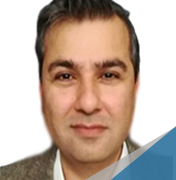
Faqir Zarrar Yousaf is a Senior Researcher at NEC Laboratories Europe in Heidelberg, Germany. His current research interest is focused around NFV/SDN related technologies in the context of 5G network architecture and operations. He is also an active delegate at the ETSI NFV standards organization. He was awarded NEC’s standardization “Fresh Player” award in 2015 for outstanding work in ETSI NFV. He has contributed to around 7 published ETSI NFV standard documents with over 130 contributions; while being a Rapporteur for three work items. Dr. Yousaf has extensive experience in the design development, modeling, simulation and prototyping of novel protocols, algorithms and system methods for optimizing network performance. He has filed 11 patents while his research work has been published in several peer reviewed international journals, conferences, book chapters and Internet Drafts. He is member of the Institute of Electrical and Electronics Engineers (IEEE) and has served as Co-chair, TPC member and reviewer for various conferences and journals.





